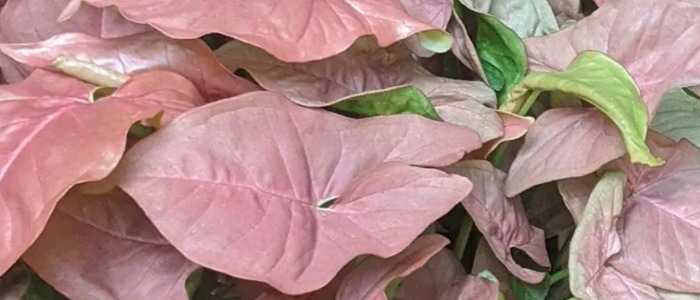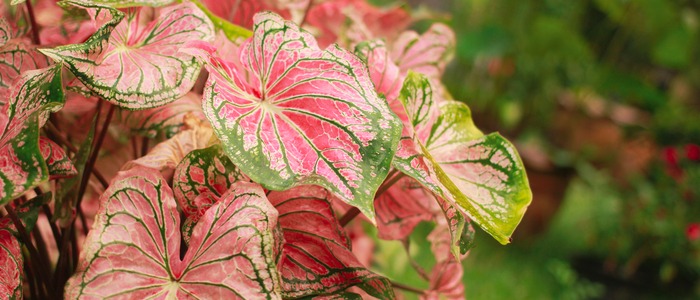Cryptanthus, also known as the earth star plant, is a stunning and unique addition to any indoor garden. With its vibrant colors and striking patterns, this tropical beauty is sure to catch the eye of any plant enthusiast. But there’s more to this plant than just its good looks. Cryptanthus is also incredibly easy to care for, making it the perfect choice for both experienced gardeners and beginners alike.
In this article, we will delve into the fascinating world of Cryptanthus, exploring care tips, propagation, pruning, and common pests and problems. So, whether you’re a seasoned gardener looking to add a new addition to your plant collection or a beginner wanting to start your indoor garden journey, Cryptanthus is a must-have pink houseplant.
.

Cryptanthus Plant Frequently Asked Questions
Can you propagate the Cryptanthus plant?
Yes, Cryptanthus plants can be propagated through division. This involves carefully separating the offsets or "pups" from the main plant and planting them in their own pots. It is best to do this during the spring or summer when the plant is actively growing. With proper care and attention, the propagated plants can establish their own root systems and grow into new healthy plants.
Does Cryptanthus plants like sun or shade?
Cryptanthus plants prefer indirect or filtered sunlight rather than direct sun exposure. While they can tolerate some sun, too much direct sunlight can lead to their leaves burning or turning brown. Therefore, it is recommended to place Cryptanthus plants in a location that receives bright, indirect light or partial shade to ensure their optimal growth and health.
How to Grow and Care for Cryptanthus or Earth Star Plant
Originating from the tropical regions of South America, this cryptanthus plant is well-suited to indoor environments with moderate light and humidity levels. Its low maintenance requirements make it ideal for busy individuals or those who may not have a green thumb. So, let’s dive into the world of Cryptanthus and discover the joy of growing and caring for this stunning tropical gem.
Growing the cryptanthus plant is a rewarding experience that allows you to bring a touch of the tropics into your home or office. To start, choose a well-draining potting mix and a container with drainage holes to prevent waterlogging. Place your cryptanthus in a location that receives bright, indirect light, as direct sunlight can scorch its delicate leaves. As for watering, allow the soil to dry out slightly between waterings, as overwatering can lead to root rot.
Additionally, it’s important to provide high humidity levels by misting the leaves regularly or placing a tray of water near the plant to increase moisture in the air. Cryptanthus plants also benefit from occasional fertilization during the growing season to promote healthy growth. Lastly, be mindful of temperature changes, as these tropical plants prefer temperatures between 60-75°F (15-24°C).
How to Propagate the Cryptanthus Plant
Propagating the cryptanthus plant is a rewarding and exciting process that allows you to expand your collection or share this beautiful plant with others. One common method of propagation is through division. To do this, carefully remove the mother plant from its pot and gently separate the offshoots or pups that have formed around the base.
Ensure that each pup has its own roots and a few leaves before gently planting them in their own individual pots filled with well-draining soil. Remember to keep the newly propagated plants in a warm and humid environment to encourage root development. Another method of propagation is through leaf-cutting. This involves taking a healthy leaf from the mother plant and allowing it to dry out for a few days. Once the leaf has calloused over,
it can be placed in a pot filled with moist soil or a mixture of soil and sand. Keep the pot in a warm and well-lit area, making sure to mist the leaf occasionally to maintain humidity. With time, new roots will emerge from the base of the leaf, eventually developing into a new plant. Leaf cuttings are a great way to propagate plants that are more delicate or have less pronounced offshoots.
Tips for pruning the Cryptanthus plant Here are some tips for pruning the Cryptanthus plant:
1. Promote healthy growth: Pruning the Cryptanthus plant is important to encourage healthy growth and prevent overcrowding. By removing dead or damaged leaves, you can redirect the plant’s energy towards new growth and ensure that nutrients are efficiently distributed throughout the plant.
2. Maintain a compact shape: Regular pruning helps to maintain a compact and aesthetically pleasing shape for the Cryptanthus plant. By trimming back long or leggy stems, you can encourage the plant to grow in a more bushy and well-proportioned manner.
3. Prevent disease and pests: Pruning also plays a role in preventing disease and pests in the Cryptanthus plant. By removing any infected or infested branches or leaves, you can stop the spread of diseases or pests to other parts of the plant.
This promotes overall plant health and reduces the risk of severe damage or death. Additionally, pruning allows for better air circulation and light penetration, creating an unfavorable environment for disease-causing organisms and pests to thrive.
Common Problems Found When Growing the Cryptanthus Plant
.Cryptanthus plants are beautiful and low-maintenance additions to any garden, but they can be vulnerable to certain pests and diseases if not cared for properly. Some of the most common pests and diseases that affect Cryptanthus plants are mealybugs, spider mites, scale insects, root rot, and leaf blight. It’s important to be aware of these potential issues so you can take steps to prevent them occurring in the first place.
Mealybugs are small white cotton-like bugs that may appear on the leaves of your Cryptanthus plant. They tend to congregate in clusters and can cause damage if left unchecked. Spider mites are another pest that feeds on the undersides of leaves, weaving small webs as they go. These webs may be hard to spot at first, but will become more visible over time as their population increases.
Scale insects are flat-bodied creatures that attach themselves onto stems or undersides of leaves. These insects feed on plant sap and can weaken a Cryptanthus plant if left untreated for too long. Root rot is a fungal disease caused by overwatering or poor drainage that can cause a Cryptanthus plant’s roots to rot away and become limp in appearance. Leaf blight is an infection that causes yellowing and browning of the leaves – this is usually caused by too much sun exposure or lack of humidity.
Knowing how to identify these common pests and diseases is key for keeping your Cryptanthus plants healthy and thriving. In order to prevent such issues arising in the first place, it’s important to provide your plants with the right soil mix for optimal growth; propagating them correctly; avoiding overwatering; providing sufficient light; maintaining good air circulation; controlling temperature levels; and using natural predators like ladybugs whenever possible.
With the right care, you’ll have beautiful Cryptanthus plants for years!
Conclusion
In summary, Cryptanthus plants are an attractive and easy to care for addition to any garden. To ensure these plants stay healthy you should be aware of the common problems that can arise and take steps to prevent them. This includes selecting a soil mix with balanced pH levels and good drainage capabilities, propagating correctly, monitoring water levels, providing sufficient light and controlling temperature levels.
With the right care from knowledgeable gardeners, these mesmerizing plants can add vibrancy to any outdoor space. By understanding the most common issues associated with Cryptanthus plants you will be able to address them quickly before they become more serious problems down the line.
Other Pink Color Houseplants












Pink Calla Lily Plant
Aechmea Fasciata Plant
Pink Philodendron Plant


Kalanchoe Pink Butterflies
strawberry begonia